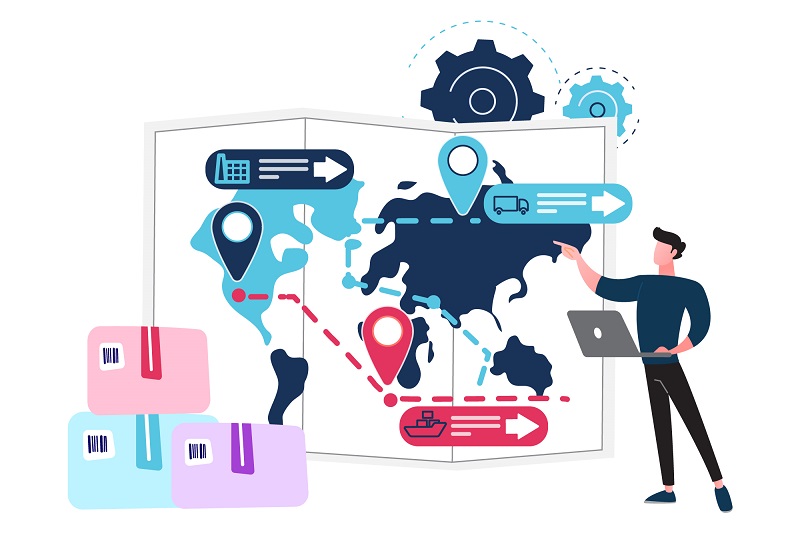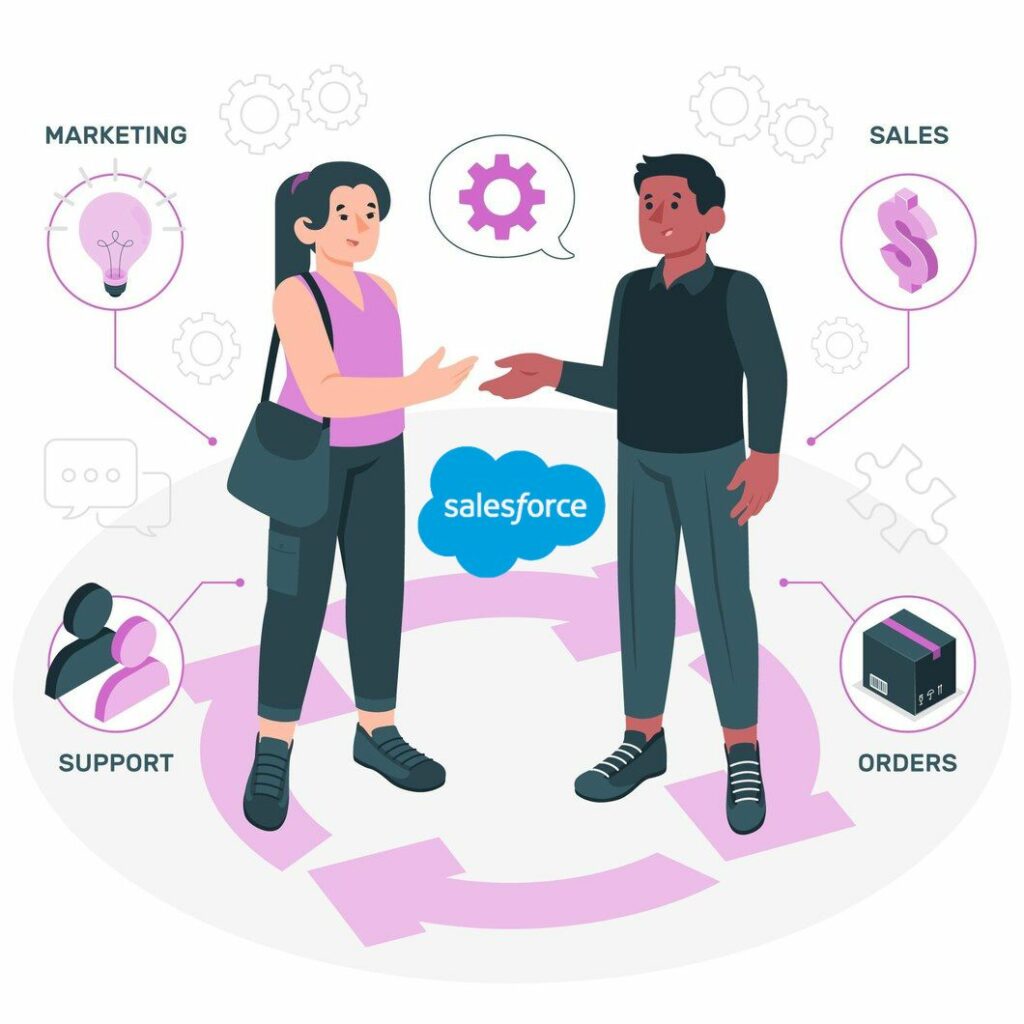Supplier Relationship Management (SRM): Definition, Process, and Benefits
Supplier Relationship Management (SRM): Definition, Process, and Benefits
Supplier Relationship Management (SRM) is an important aspect of the business. When the relationship with a supplier is positive, it leads to several benefits. They may offer you better pricing and provide timely delivery. Even the risk factor decreases when it comes to operations and supply chains.
Now, there are several best practices that you need to do while maintaining supplier relationship management. Some of these practices are easy to perform, while others require more effort and brainstorming.
Now, let’s check out what supplier relationship management, its process, different types of supplier relationship management, benefits, and challenges.

What is Supplier Relationship Management (SRM)?
Supplier Relationship Management is a well-defined continuous process which helps the business to evaluate relationships with vendors to check if there’s any scope for improving the business operations.
There are no exact tasks defined under supplier relationship management. However, the primary goal is to ensure better supplier-business relationship decision-making.
The first thing to do in evaluating supplier relationships is to understand the strengths and weaknesses of the supplier.
Let’s say there’s a supplier who provides delivery at a fast pace, but its pricing is higher than the others. Then, there’s one with lower pricing, but it has issues regarding communication. So, by checking all your suppliers against decided factors gives the idea of how one should proceed with each supplier.
With SRM, you’ll learn when and how to negotiate with different vendors. It will help you reduce costs and save costs. Besides that, it also explains when to cut off with a supplier in case they don’t meet the expectations or the relationship is no longer needed.
These SMR tasks are performed analytically. However, there’s always human involvement in decision making and management. Besides that, people are also involved when there’s a relationship between the organizations. For instance, there’s a connection between purchase managers and sales personnel.
Sometimes, relationship managers prioritize one out of analytics or relationship. However, one needs to equally focus on both.
Complete Process for Supplier Relationship Management
As we mentioned before, there’s no specific definition of the SRM process, and hence, there’s no specific process as well. The SRM process also changes depending upon the industry, relationship, procedure, etc. Through thorough research, we finalised the below-mentioned process that will help you make the most out of SRM:
Step 1: Segment the Supply Base
Segmentation allows you to group and bifurcate different suppliers according to factors such as the type of relationship, the items provided, etc.
With the help of grouping, you can have better insights into supplier relationships. It will make you understand what type and level of effort you need to make.
For instance, you can segment the suppliers based on their risks and their importance to the company. This segmentation helps the business in various ways. For instance, when you segment suppliers according to items, you find out if there’s an item available with multiple vendors. By learning that, you will know how much you can negotiate with different vendors.
Similarly, there can be several other ways to segment the suppliers. A competent supplier relationship manager must be aware of performing segmentation in various ways so that it can shed light on different aspects of supplier relationships.
Step 2: Create a Supplier Strategy
Supplier strategy is used to define your supplier arrangement and how to achieve it.
Let’s give you an example:
You are dealing with three suppliers.
Supplier 1 provides quality products but doesn’t provide timely delivery.
Supplier 2 isn’t good with communication, and the delivery doesn’t match the requirements sometimes.
Supplier 3 is very supportive, but there are issues with quality.
Now, when you have to create a supplier strategy, you should aim to request supplier 1 to improve delivery time or have a backup supplier. If the delivery timing doesn’t improve, you can utilize supplier 1 when the delivery is not urgent.
When it comes to supplier 2, you need to be specific in communication and ensure that the supplier understands the requirement correctly. It will also be beneficial to provide requirements in written communication and have a policy to safeguard the interests of both parties.
Similarly, if supplier 3 doesn’t provide the required quality, you must limit the dealing when no better option is available.
To make this strategy realistic, you need to create an action plan that aligns with the goal of minimising the shortcomings of the suppliers.
Step 3: Collaborate With Suppliers
Many businesses don’t require the value of collaborating with the suppliers. Organizations assume that the relationship ends with orders, payments, and deliveries. However, one loses the value of collaborative relationships as they proceed further.
You can collaborate with your suppliers in two ways:
- Informal human-to-human collaboration
- Formal collaboration
To develop an informal collaboration, you need to develop an organic relationship with the help of good relationship management.
This will affect the business in such a way that suppliers will be ready to go the extra mile for the vendors and vendors, and at the same time, keep them updated with the change in demand and product feedback.
Step 4: Strategy Execution
After completing these three steps, it’s time to execute the strategy. Execution doesn’t need to go as per the plan, but if you have a collaborative relationship with suppliers, the execution will get smooth as you move forward.
Step 5: Improve Supplier Quality
You can improve the supplier quality by adjusting which supplier is delivering what item. Moreover, you can segment and determine the strengths and weaknesses of your suppliers. By doing that, you can improve the quality, speed, and reliability.
It’s also possible to work directly with the supplier to improve the quality by defining an objective or working on specific criteria.
The key to improving supplier quality is to communicate. You just need to let them know what you want, and they will provide the quality accordingly. For instance, something that makes a huge difference in your business requires only a small change for suppliers.
Step 6: Continuous Monitoring and Change in Strategy
Every business has a supplier relationship, but there needs to be continuous monitoring and change in strategy for supplier relationship management. The step suggests that creating the strategy and executing it once is not enough, and you continuously need to change it as the business is dynamic:
- Business processes changes
- New suppliers are added
- Previous suppliers are removed
- New technology added
- Customer behaviour and expectation changes
- Economic condition changes
You need to continuously monitor all the aspects of supplier relationships and make changes by checking the relevant decisions taken until now.
It also includes monitoring the changes in the market and exclusively checking competitors of your suppliers, their rates, delivery time, etc.
Want to Improve Your Supplier Relationship Management?
Experience the Power of NetSuite WMS
Reactive vs. Strategic Supplier Relationship Management
Let’s first discuss strategic supplier relationship management.
Strategic SRM suggests making continuous changes to improve supplier relationships. It also helps to improve the value you get from those companies.
Strategic SRM allows you to plan the strategy for months, quarters, and years into the future. However, when SRM doesn’t go as planned, you need to make changes in the strategy accordingly.
Reactive Supplier Relationship Management comes into the picture when there’s an emergency, or a supplier makes a grave mistake. In that case, you should have a backup supplier available to support you in a challenging situation. You must be able to pick the supplier without much scrutiny and go through the entire selection process.
This time, you must have clear expectations and responsibilities so the backup supplier is also prepared with the solution before the problem arises.
Sometimes, you need reactive management for situations that are in your favour. For instance, there can be a sudden increase in demand or any change in technology. Etc.
Check out the table highlighting the difference between reactive and strategic supplier relationship management:
|
|
Reactive |
Strategic |
|
Primary Goal |
React immediately to align the business with the situation |
Strategising the SRM with the right planning to build a fruitful relationship |
|
Time Horizon |
Short Term |
Long Term |
|
Responses to a Problem |
Immediate action to minimize losses |
Understanding the problem and creating a plan to reduce such instances |
|
Focus of SRM |
Making an attempt to handle the situation together |
Making an attempt to have a long-term bond. |
What Businesses Achieve With Supplier Relationship Management?
The primary goal of supplier relationship management is to improve operations by better relationships with the suppliers. Specifically speaking, SRM aims to enhance reliability, maximise growth, and reduce costs.
Now, let’s check in detail what your business can achieve with supplier relationship management.
Create a close bond with the supplier.
That’s the apparent reason why supplier relationship management is required- to create a close bond with the suppliers. However, the bond differs from supplier to supplier because of your dealing type and the nature of the commitment.
It doesn’t only include the usual activities such as creating contracts and placing orders; it’s more than that. You can even develop relationships at the personal level. Such bonds are useful when suppliers are ready to make extraordinary efforts in adverse conditions.
Mitigate supplier risk
SRM focuses on improving operations and planning the relationship. However, the main return of building a supplier relationship is obtained when the conditions are not in the favour.
There are several instances when you’d face supplier risk, such as:
- Mistakes
- Miscommunication
- Sudden price increment
When you have great supplier relationship management, these risks can be mitigated easily.
- Better communication brings less chances of error.
- You get information regarding the pricing and upcoming adverse conditions in advance.
- Better scope of bargaining.
Optimize the value chain
It is essential to view suppliers more broadly with respect to the business’s larger value chain. This helps a supplier relationship manager to optimize business value through:
- Product innovation
- Lower prices
- Reduced risk
There can be various ways to optimize the business from the existing chain. For instance, understanding the flow of goods and identifying the points from where you can get better pricing.
Supplier Relationship Management Benefits
There are several benefits of supplier relationship management, but the catch is that the manager must take the efforts in the right direction. Let’s check what benefits you get from supplier relationship management:
Reduction in Costs
The primary main of supplier relationship management is to save costs. This helps us to pick the suppliers that provide the services at the best price without your business compromising the quality.
Better Risk Management
In case of adverse events in the supply chain, proper supply chain management can be a saviour. Sometimes, the delivery of products or services doesn’t go as planned. Reactive SRM comes into the picture when you have trustworthy suppliers to mitigate the risk.
Improved Supplier Responsiveness
If supplier relationship management is working correctly, communication is two-way. When you keep the supplier informed, they will also provide details of how they plan to move forward. Such a relationship ensures improved response, making the supplier trustworthy.
Enhance the Visibility of the Value Chain
One of the best advantages of SRM is improved value chain visibility. You can directly look into the operations with the help of SRM’s vision. You can directly track your inbound goods and the status of services.
Make the Most out of the Suppliers
When the relationship with the supplier gets stronger, you can take better advantage of supplier resources. It may help you improve pricing delivery time, and even display opportunities to collaborate with the supplier and grow your business.
What are the Challenges that Businesses Face in SRM?
SRM helps in reducing costs, improving reliability, etc. However, it comes with several challenges, which we will discuss now.
- Lack of alignment between your and your supplier’s goals.
- Lack of a balance between diversity and level of relationship.
- Supply chain disruptions that make business continuity challenging
- There’s always a limit on visibility, even after good supplier relationships.
NetSuite Supplier Relationship Management Software
We have discussed several best practices for excellent supplier relationship management. However, one important point that we’d like to add here is using supplier relationship management software such as NetSuite’s Procurement Module.
The applications have supplier relationship management capabilities such as:
- Collecting, managing, and analyzing data.
- Live-tracking of shipments
- Making predictions and projections
NetSuite’s vendor management software is of the best ways to keep track of vendor’s performance, i.e., their response time, delivery time, communication efforts, etc., and you can execute SRM strategies accordingly.
It also gives access to an online portal where vendors can communicate with the company. Besides that, there’s a vendor scorecard that quantifies the performance and makes the tracking easier.
One can also go for NetSuite for NetSuite Supply Chain Management, which allows SR managers to view the organization’s complete value chain, from customers to suppliers.
Cloudiotech Supplier Relationship Management Services
Cloudiotech is one of the top NetSuite partners who have implemented supplier relationship management modules for businesses from various industries such as healthcare, manufacturing, etc.
We understand your business and its supply chain to develop key performance indicators for your suppliers. According to that, we customize the tracking that allows you to understand the supplier’s performance and what steps to take to develop the relationship.
If you are already using another supplier relationship management tool and want to migrate to Netsuite, we also provide a service for that.
Cloudiotech has pledged to be at the client’s side all the time. While getting started, if you wish to have training regarding the usage of the NetSuite SRM application, we can help you with that, too. In fact, we assist our clients by providing an on-site supplier relationship manager who can help the team use the application and learn how to improve the relationship.
Supplier Relationship Management Frequently Asked Question
- Arms-length
- Strategic Alliance
- Outsourcing
- Partnership
- Just in Time
- Defining objectives
- Selecting the right suppliers
- Developing relationships
- Managing performance
- Implementing results




